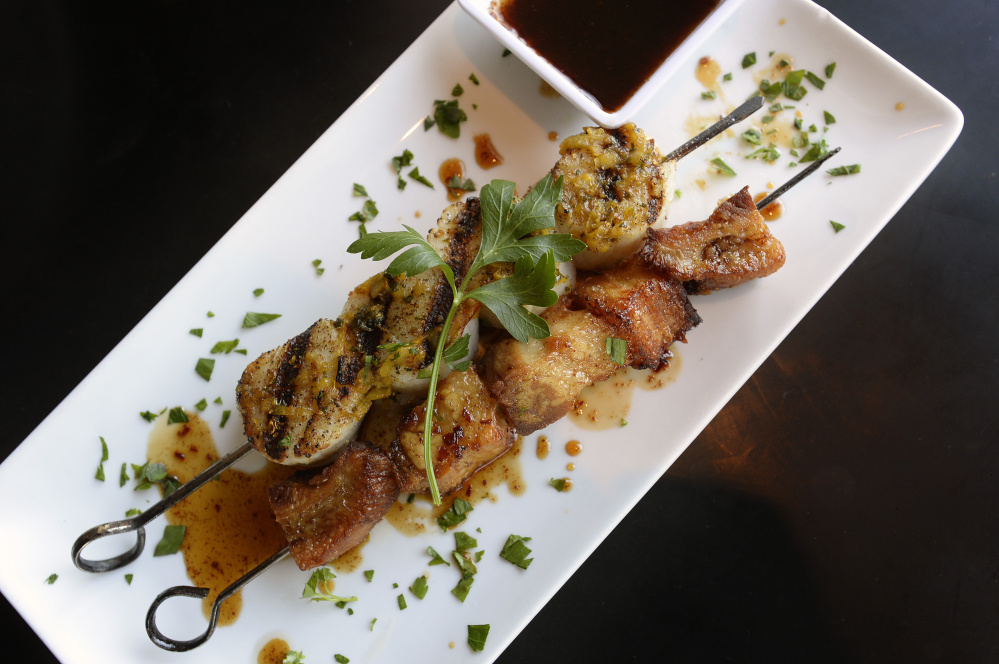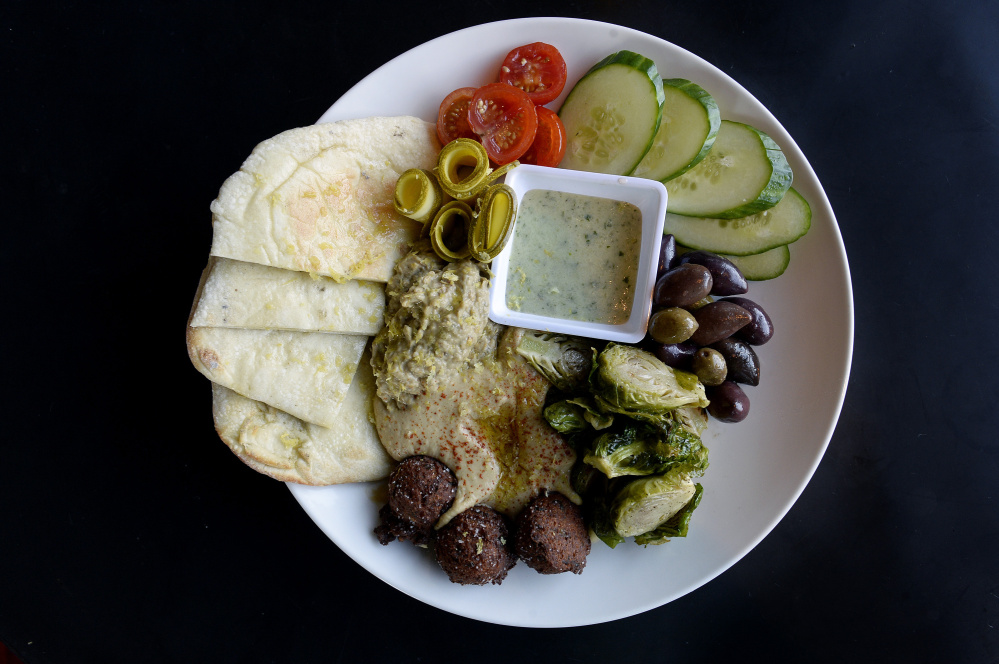Let’s start with bread. You can tell a lot about a restaurant by the bread they serve, or even if they do. At a place like Tiqa, where all bread is made in-house and overseen by Executive Pastry Chef Robyn Ray, it’s even more revealing, because what ends up in your bread basket is the evidence of purposeful choices the kitchen has made – decisions that started with flour and water.
Now stop to consider that calculus in a restaurant whose pan-Mediterranean theme spans 12 very different countries, including Spain, Italy, Turkey and Israel, all with their own bread traditions. Just figuring out how to put some gluten on the table requires a spreadsheet and a slide rule.
To complicate things further, Executive Chef Bo Byrne, who took over the kitchen in October, was not trained in Mediterranean cooking. Starting when he was a dishwasher too young for an after-work drink, Byrne made his career working through David Turin’s network of restaurants, starting with David’s on Monument Square in Portland, and ending at David’s Opus Ten, where he was head chef.
So with a great deal of research involving conversations and stacks of cookbooks, Ray and Byrne faced the challenge of presenting just a few breads to represent a wide spectrum of cuisines. What they came up with is an admirable answer to this particular riddle: Slices of a rustic sourdough evoke yeasty, nutty flavors of crusty French levain, and wedges of pale, fresh Middle Eastern pita make the perfect vehicles for sopping up fruity olive oil. But the highlight of the international bread plate is its rectangles of Italian focaccia, topped not with salt and rosemary, but with a moss-green dusting of tart and aromatic za’atar.
Tiqa’s za’atar is Byrne’s own blend, one that incorporates an abundance of white sesame seeds for extra crunch. Fair game, since za’atar, like many great spice blends, varies from place to place and cook to cook. His is simple, with oregano, sumac, white sesame, salt and pepper. You might miss the thyme or hyssop a bit, but there is an unfussy linearity to Byrne’s za’atar that he uses to draw violent slashes across deep, meaty flavors and to underline floral, herbal fragrances in vegetables.
If you scarf down all the flavorful focaccia before you have a chance to see how the spices work with other dishes, don’t worry: On the bread plate, you’ll find a small bowl of extra za’atar that you can save for later.
We especially enjoyed it sprinkled on the smooth hummus that came as part of the mezze plate ($16), and to be fair, it needed a boost, as did the undercooked and underseasoned Brussels sprouts. But apart from these two hiccups, the rest of the mezze were enjoyable, from the meaty olives, served warm, to unbelievably airy little footballs of falafel engineered for lightness by using cooked chickpeas rather than raw. Best of all was an ultra-citrusy baba ghanoush made with the juicy, smoky flesh of scorched eggplant and fresh lemon juice and finished with lemon zest.
Those same citrus flavors popped up again in another of Ray’s dishes, the baklava ($8) with tahini gelato and candied lemon. One of the line cooks brought our plate over to us from the open kitchen where we had been watching him throughout the meal, and announced that, while what we were about to eat was his favorite dessert at Tiqa, it featured his least favorite job. “Getting all the white pith off of those lemon peels is the worst! It’s painful. Literally,” he said. Byrne later explained that “a chef with expert knife skills can do it in one move, but the guys who are still learning just chip away at the white part. It takes them forever.”
I felt empathy for all the prep cooks with their cramped, aching fingers, but the results made that pain worthwhile. The high notes of the sticky, candied lemon peel were perfectly calculated to brighten the subtle, almost peanut-buttery gelato and crispy walnut-and-almond filled baklava.
Whereas you’d normally think of coffee as a good match for such a sweet dessert, I have to put in a good word for the ginger and fig infused martini ($10). With flavors that call to mind a grappa, or as my dining companion noted, an old-timey Brach’s spiced jellybean, the cocktail makes a great pairing for this dessert.
It also matched up well with the scallop and pork belly kabob ($18). We loved the grill-marked scallops, cooked just enough to give them a bit of chew and keep them on their skewer, as well as their unusual, gently bitter chermoula glaze, made from grated onion and saffron. In contrast, the pork belly – a version of a Portuguese chicharon – was a little overcooked and chewy. Then there’s the questionable decision to serve the pork glaze, a slap-in-the-face vinegary chili concoction, as a dipping sauce. In brushable quantities on the pork, it was lovely, but on its own, it was lethal.
Still, it’s hard to fault the kitchen for taking risks; some do pay off well, like the haddock ($26) crusted in pure pulverized red lentils that lend a round sweetness to the fish. The dish’s braised kale, not to mention the white bean ragout with tomato, shallots and chorizo would even make an excellent light entrée if paired together. Also the sumac roasted chicken ($26), a roasted half-bird rubbed generously with sumac and oil and served on markook, a flat, unleavened bread similar to a lavash or Indian chapati. Yes, the markook was overbaked, but the pungent flavor on the crispy chicken skin, fresh bite from raw red onion and the savory, quick-sauteed asparagus all made the dish feel like something you might savor while overlooking a Levantine beach, not in a spacious, glass-fronted dining room on Commercial Street.
Moreover, none of the dishes seem like they were dreamed up by a chef who has spent his entire professional career cooking in Portland – someone who told me he was never a very good student in school. Because through unremitting, ongoing research, Byrne and his team have found a way through Tiqa’s multinational logic puzzle, and has stitched together a competent menu to represent 12 disparate cultures and cuisines. While it’s not always perfect, their solution is still a pretty elegant one.
Andrew Ross has written about food in the United Kingdom and in New York, where he co-founded NYCnosh, a food website. He and his work have been featured on Martha Stewart Living Radio and in The New York Times. He is an Internet researcher and higher education consultant. Contact him at:
andrewross.maine@gmail.com
Twitter: @AndrewRossME
Send questions/comments to the editors.




